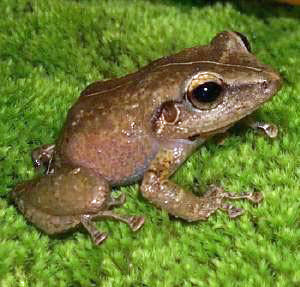Facts About Puerto Rican Coqui
The common coquí, a frog species native to Puerto Rico, is renowned for its loud nighttime calls. These calls, produced by males, serve to deter rivals and attract females. Belonging to the Eleutherodactylidae family, the coquí holds a significant place in Puerto Rican culture, often regarded as an unofficial symbol of the island. This species was first described by Richard Thomas in 1966 and is classified within the Eleutherodactylus genus, which encompasses approximately 185 species across the Americas.
These frogs typically measure between 30 to 52 mm in length, with males being smaller due to the energy they expend during breeding. They possess sticky toe pads that facilitate climbing, although they are not strong swimmers. Common coquís are nocturnal and their activity is influenced by humidity levels. They thrive in various habitats across Puerto Rico, from sea level up to 1,200 meters.
Although native to Puerto Rico, the common coquí has become an invasive species in locations such as Hawaii and Florida. In these regions, their high population densities and voracious appetite for invertebrates cause significant ecological and economic issues. They primarily feed on arthropods, and their diet varies with age and size. Males also modify their feeding behavior based on their calling activity.
Coquís reproduce year-round, with a peak during the wet season. Females lay their eggs on plants or in abandoned nests. Unlike many other frogs, coquís skip the tadpole stage; their eggs develop directly into fully-formed froglets within eight weeks. During this period, males guard the eggs, providing protection and moisture until they hatch.
